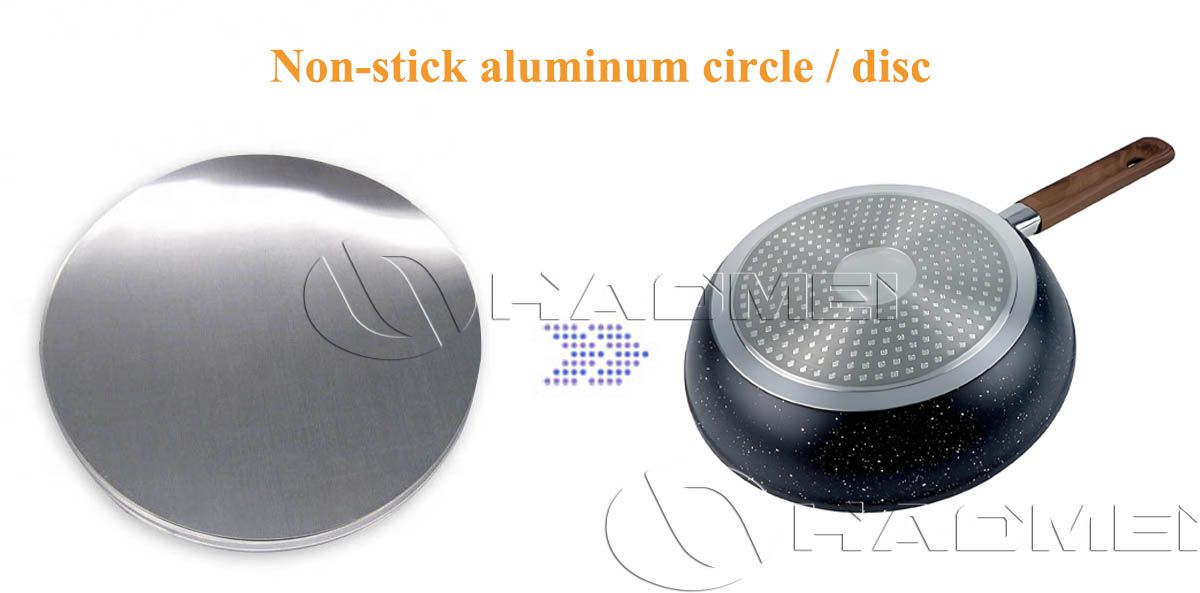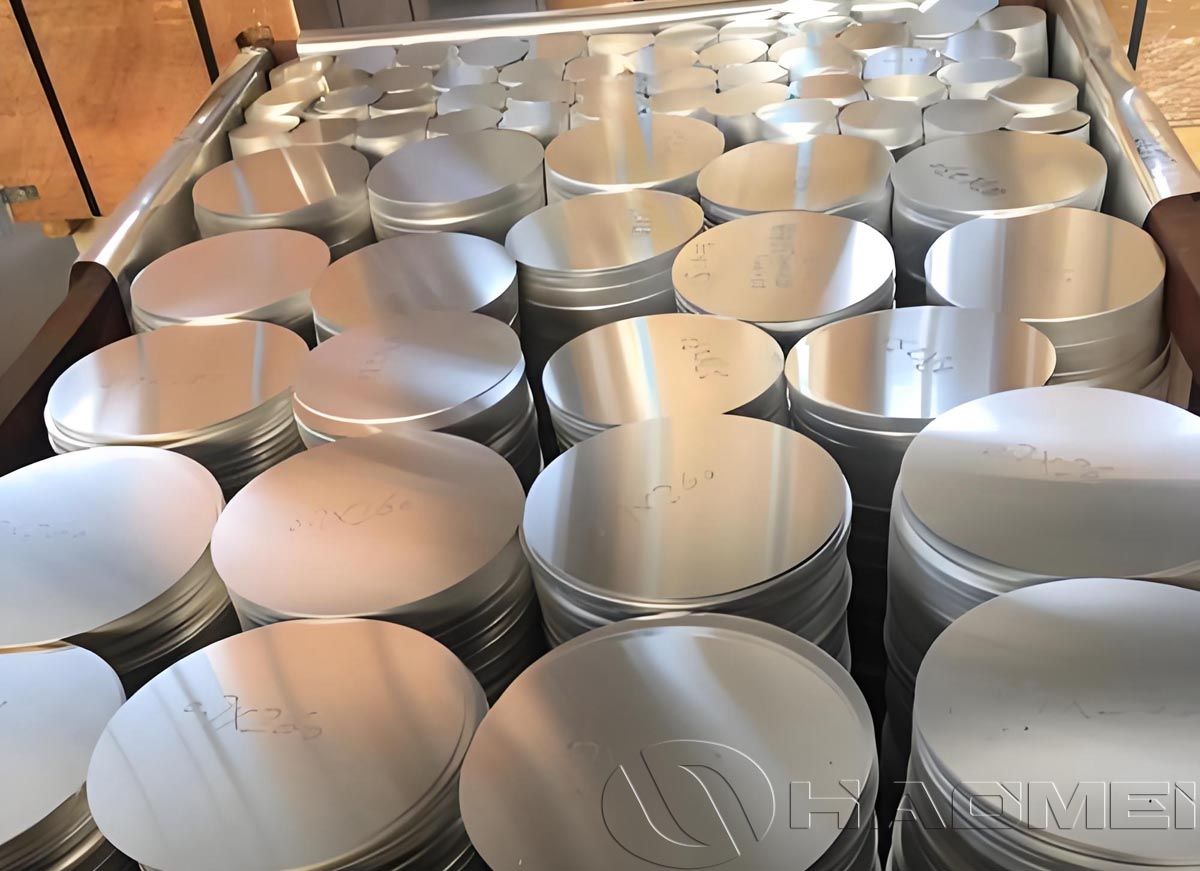
 No.14 Waihuan Road, CBD, Zhengzhou, China
No.14 Waihuan Road, CBD, Zhengzhou, China
 +86-18703635966
+86-18703635966

 No.14 Waihuan Road, CBD, Zhengzhou, China
No.14 Waihuan Road, CBD, Zhengzhou, China
 +86-18703635966
+86-18703635966
In modern kitchens, nonstick pans have become indispensable cookware. They not only make cooking easier but also reduce oil usage, aligning with today's healthy eating concepts. The quality of a nonstick pan depends not only on the coating material (such as PTFE or ceramic coating) but also on the performance of the base metal. 3003 aluminum circles, used as substrates for nonstick coatings, are favored by cookware manufacturers around the world.
3003 aluminum circles are circular aluminum blanks made from 3003 aluminum alloy through precision rolling, annealing, stamping, and other processing techniques. This alloy belongs to the Al-Mn aluminum-manganese series, which provides good corrosion resistance, formability, and weldability. It is widely used in cookware manufacturing, lamp reflectors, signs, traffic signs, and container production.
Compared with pure aluminum series such as 1050 or 1060, 3003 aluminum circles offer noticeably higher mechanical strength, corrosion resistance, and formability, making them especially suitable for deep-drawing applications and high-temperature environments-ideal for nonstick pans, frying pans, flat pans, milk pots, and griddles.
3003 aluminum discs are available in different temper conditions depending on the customer's processing requirements:
| Temper | Characteristics | Typical Applications |
| O (Annealed) | Best ductility, ideal for deep drawing | Cookware, nonstick pans, containers |
| H14 (Semi-hard) | Higher strength, good formability | Lamp reflectors, signs |
| H16 / H18 (Hard) | High hardness, good wear resistance | Industrial components, structural parts |
For cookware production, 3003-O aluminum circles are the mainstream choice due to their softness and excellent ductility, enabling complex spinning and coating processes.
1. Excellent Deep-Drawing Performance
Cookware manufacturing often requires stamping or spinning. 3003 aluminum circles supplied in O temper have excellent ductility, ensuring no cracking or wrinkling during production. This guarantees uniform wall thickness and an aesthetically smooth pot body.
2. Outstanding Rust Resistance
With added manganese, 3003 aluminum provides better rust resistance than pure aluminum. It withstands humid kitchen environments, extending cookware life.
3. Excellent Thermal Conductivity
Aluminum is known for superior heat conduction. With a thermal conductivity of 160-190 W/m·K, 3003 aluminum heats faster and more evenly than stainless steel, preventing hot spots and burning food. It also makes the cookware lighter and more energy-efficient.
4. Excellent Surface Compatibility for Coatings
Thanks to fine rolling and surface treatment, 3003 aluminum circles have a clean, smooth surface with minimal oil residue, providing excellent adhesion for PTFE and ceramic nonstick coatings. This results in longer-lasting, more durable nonstick performance.
5. Safe and Hygienic
3003 aluminum forms a stable oxide layer with strong adhesion and excellent corrosion resistance. Combined with nonstick coating, it ensures safe and hygienic cooking.
6. Lightweight & Environmentally Friendly
Aluminum has a density of only 2.73 g/cm³, making cookware significantly lighter than stainless steel. Aluminum is also fully recyclable, supporting today’s sustainable manufacturing trends.

| Tempers | O, H12, H14, H18, etc. |
| Thickness | 0.3 mm - 6.0 mm |
| Diameter | 100 mm - 1200 mm |
| Production process | CC / DC |
| Surface treatment | Anodizing, brushing, polishing, coating, etc. |
| Applications | Nonstick pans, pressure cookers, lamp reflectors, etc. |
| MOQ | 1-3 tons |
Mechanical Properties
| Tensile Strength | ≥110 MPa |
| Yield Strength | ≥50 MPa |
| Elongation (A50) | ≥20% |
| Hardness (HB) | 35-50 |
| Thermal Conductivity | 160-190 W/m·K |
| Density | 2.73 g/cm³ |
1. Stamping Forming
The aluminum circle is stretched using large stamping equipment to form the basic shape of the pot body. Thanks to the excellent formability of 3003 aluminum, this process proceeds smoothly without cracks or defects.
2. Rim Rolling Reinforcement
High-quality aluminum nonstick pans often feature rolled rims to enhance structural rigidity and prevent deformation. This method also allows slight reductions in material thickness (up to 20-30%), saving aluminum and reducing cost.
3. Surface Treatment
After shaping, the pot body undergoes cleaning and surface preparation to ensure proper coating adhesion. The smooth surface of 3003 aluminum provides an ideal substrate.
4. Application of Nonstick Coating
Finally, PTFE or ceramic coatings are applied and cured at high temperatures. 3003 aluminum withstands this thermal cycle without losing mechanical strength.
| Diameter (mm) | Thickness (mm) | Weight (g) | Application |
| 180 | 0.8 | 95 | Small milk pot |
| 220 | 1.0 | 150 | Frying pan |
| 260 | 1.2 | 210 | Wok |
| 300 | 1.5 | 310 | Large wok / griddle |

versus Stainless Steel
3003 aluminum has significantly better thermal conductivity than stainless steel and is lighter, resulting in nonstick pans that heat up faster and more evenly, and are easier to handle.
versus Cast Iron Pans
Aluminum nonstick pans are less prone to rust and offer better initial nonstick performance than traditional cast iron pans, making maintenance easier.
versus Other Aluminum Alloys
Compared to 1000 series pure aluminum, 3003 aluminum alloy is stronger;
Compared to 5000 series aluminum-magnesium alloys, 3003 offers better formability and a lower price, achieving a perfect balance of performance and cost in nonstick pan applications.
Copyright © 2025 By HAOMEI Aluminum CO., LTD. All Rights Reserved. Sitemap